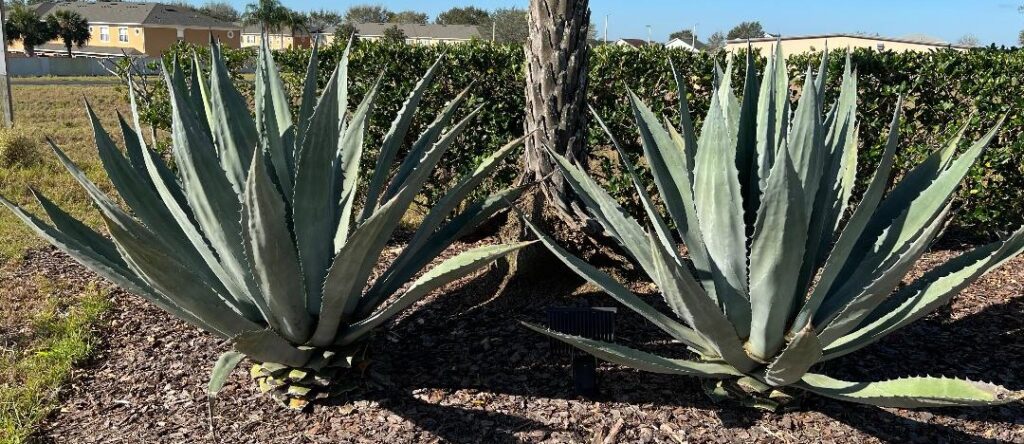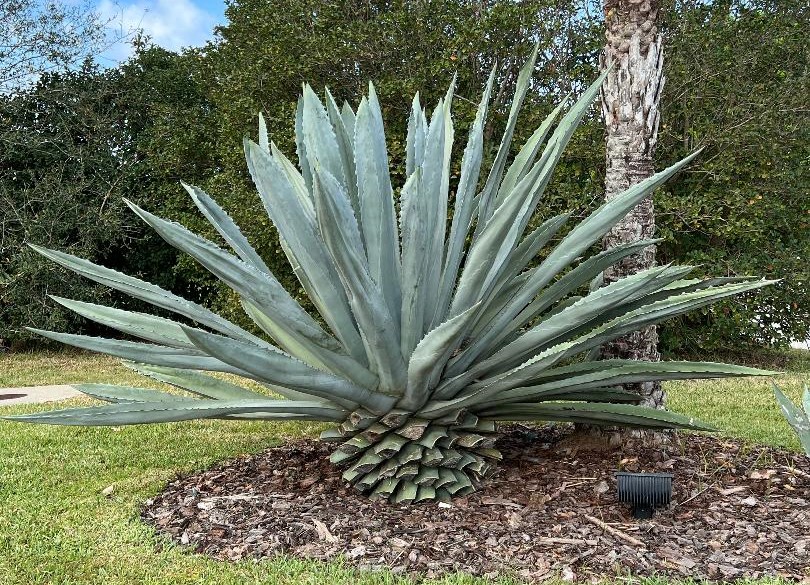How to Grow Agave Succulent Plants

About Growing Agave Plants in Your Home Garden
Low maintenance, and easy to grow, Agave succulents are great plants to add to your arid landscape. Also called “Tequila Cactus”, this succulent is very drought tolerant. It is more closely related to a lily than a cactus. But, you’d never know it. Like other succulents, it stores water in its leaves to use during dry periods. Growing Agave plants is a novelty in the home garden. So, make sure to grow them, where they will be seen by family and fellow gardeners.
There are over 250 species of agave plants. Some make excellent landscaping plants. While other smaller varieties are much smaller and grow well are container plants indoors or out.
Most gardeners and homeowners grow Agave plants for their attractive leaves. These green to blue-green leaves have stiff, needle-like spines on the leaf tips. The plant produces a flower stalk at the end of its life cycle. The flower stalk grows up to 15 feet tall and has yellow flowers. The flower is edible. The bloom is followed by the appearance of baby plants, called “pups” growing from their rhizome roots.
The Agave leaves are filled with sap, that can be used as a soothing salve, like its cousin the Aloe plant. The main use of the sap is to distill Tequila. Only the Blue Agave plants is used to make Tequila.
Did You Know? Agave flowers are pollinated by the Mexican Bat.
Agave plants live 8-14 years. They grow 6 – 8 feet tall and just as wide, depending upon variety. Allow plenty of space for growth when you plant them.
Smaller varieties are popular for container plants for your patio, deck, or as an indoor houseplant. Grow them like a cactus. Use specifically formulated cactus soil, which is light, sandy, and well-draining.

Agave Plant Specifics
Flower Colors: Green, yellow, white
Flowers Bloom: It varies. Some varieties bloom only once in the plants’ lifetime.
Plant Height: Most grow 6 – 8 feet. Some varieties can grow up to 20 feet tall.
Plant Type: Perennial
Soil Type: Sandy, well-draining
Sunlight Requirements: Full sun
pH Level: 6.0 – 7.5
Hardiness Zones: 5 – 11
Toxicity: The raw sap is harmful to humans and pets.
Native to: North, Central, and South Americas
Botanical Name: Agave
Other Names: Tequila Cactus plant, no surprise here. It is sometimes called the Century Plant, too.
Agave Plant Medicinal Value
While the raw sap is toxic to humans and pets, when processed, it has medicinal value.
The sap of the Agave plant has been used as a laxative, for the treatment of digestive ailments, as an antiseptic, and as a sugar substitute for diabetics. Important: Agave sap can cause liver damage. Only use it as advised by medical practitioners. And, do not use it during pregnancy.
The sap is also used as a salve, similar to aloe.
How to Grow Agave Succulent Plants
Tequila Cactus plants grow best in hot, dry regions. And, they require a climate with low humidity. Select a location in full sun. The planting site should also be elevated, as the plants cannot tolerate wet feet (roots). The soil should be well-drained and slightly acidic. Check the pH level before planting and make adjustments as needed.
When growing in containers, use a cactus blend potting mix.
After planting, water thoroughly, but the soil should not be soggy. After the initial watering, apply additional water only in the driest of conditions after the soil has completely dried. For potted plants, let the top couple of inches of soil completely dry between watering.
Outdoors, fertilize once in the spring. For potted plants, use 1/2-strength liquid fertilizer every 2-3 months.
Very Important: Agave does not need rich soil. Too much fertilizer will encourage flowering, and the end of the plant’s life cycle.
At the end of the plant’s life, after the flower blooms, watch for small “pups” to form at the base of the plant. Remove and plant these new Agaves.
Insects and Plant Disease
The Agave Snout Weevil can be an occasional problem.
Winter Hardiness
Agave plants, or Tequila cactus, are native to hot regions. They are susceptible to frost. Temperatures under 28 ° F will kill the plant.
Related Articles
Also, people who read this article will like:
National Tequila Day – I’ll drink to that!
Plant Problems – Identify the causes and find the cures.
Please support our site. Shop for:
- rmmatthews100@hotmail.com
- 585-721-6528
- Rochester, NY
©1999-2024 GardenersNet.Com, All Rights Reserved

